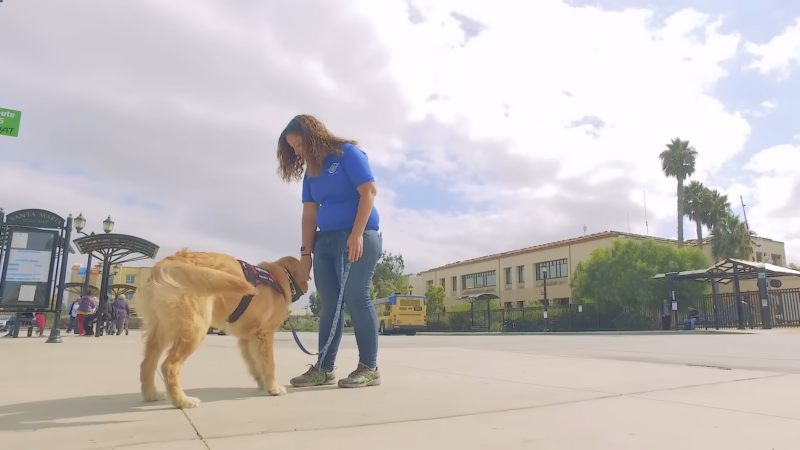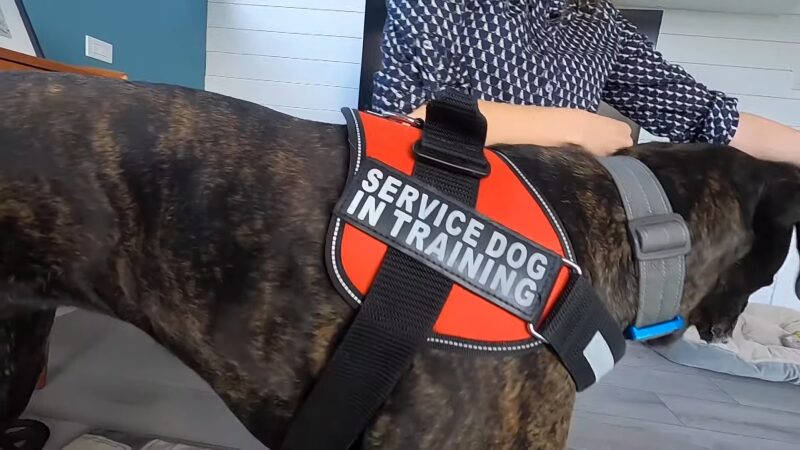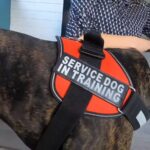Having a service dog can be beneficial in many cases, but training one to serve like that is an ongoing commitment and challenging decision. Service dogs are people’s helpers in cases of disabilities and medical conditions.
It’s important to know that they aren’t pets, so the way you behave with service dogs is different than with the pets you meet daily. According to thecollarclubacademy.com, dog training is not just a set of exercises and accomplished results. It’s a lifelong relationship between the service dog and the owner based on effective communication and training.
But before guiding you through the process, let’s have a quick overview of when and why you may need to train a service dog:
- Physical Disabilities – For people who need assistance with door opening, pulling wheelchairs, picking up dropped items, and alerting other people in case of emergency.
- Sensory Disabilities – Perfect for people who are blind, visually impaired, deaf, or hard of hearing. Service dogs can help them navigate through the environment and even alert them to sounds.
- Mental Health Conditions and Chronic Conditions – These people also need support that service dogs can provide, including emotional support, preventing panic attacks, offering pressure therapy, or alerting individuals on medical condition changes (seizure, blood sugar levels, blood pressure, etc.)
Again, these dogs aren’t pets – they’re specially trained to navigate through all the described conditions, so treat these dogs with respect.
But how do we start with training? Here’s a guide:
1. Consider Dog’s Suitability

Not every breed is good for specific conditions. Individual dogs can be difficult to train, even though they belong to a trainable breed. So, we suggest choosing a calm and stable dog with no aggressive approach toward strangers.
Make sure the dog is completely healthy and vaccinated before letting them be trained.
What Breeds are Most Appropriate for Service Dogs?
Some breeds are associated with service dog work due to their temperament, traits, and breed-specific characteristics. While every dog can be trained, you’ll often see these breeds as service dogs:
- Labradors who are known for their intelligence
- Golden retrievers who are gentle and patient
- German shepherds who are intelligent and loyal
- Poodles who are very intelligent and hypoallergenic
- Boxers who are very trainable and energetic
- Dachshunds are gentle with children
- Huskies can be loud, but they’re great for pressure treatments
- Pomeranians are small, but they have a strong sense of smell and can detect some health condition changes
Surely, you aren’t limited to these breeds only.
Mixed breeds can be great due to the gene potential, as they may have the best qualities of all the breeds they’re mixed from. Some people believe that rescue dogs have a higher emotional intelligence, making them easily trainable. That way, they give them a second chance for quality life and purpose.
But remember, you must focus on individual needs and assessment rather than breed stereotypes when choosing a service dog.
2. Set up a Training Foundation

Most dogs can be easily trained to understand commands like “sit,” “lay,” or “come.” Surely, positive reinforcement is a key, as well as socialization with other people and various places and sounds in controlled conditions.
Start with house training so you can easily extend the approach as needed.
3. Training in Public Areas
Introduce distractions to the dog while practicing obedience. That way, they’re able to focus on the tasks with little to no focus on environmental distractions.
Train your dog to behave appropriately in public spaces, like ignoring interactions from strangers unless instructed otherwise.
4. Train the Dog on Specific Tasks

Depending on your specific needs, the dog should be trained to act appropriately. The thing is, this step can’t be done without professionals. While the other steps are possible to accomplish at home, for this one you’ll need professional trainers.
That way, you can identify the specific needs and assign tasks to the dog. As a result, they can provide support or alerts regarding medical conditions.
Professionals can tailor a program based on your condition. Remember, service dogs don’t behave like pets, and they’re trained to recognize symptoms and alert you or the people around you about them. So, professional guidance must be a priority because it’s more than simple commands to spin or retrieve something.
5. Tests and Certifications
In most countries worldwide, service dogs need to be certified for the task they’re doing. While it’s not always mandatory, the dog should pass public access tests to ensure they behave appropriately. That way, you can be sure they won’t take treats from strangers or let other people pet them.
Service dog certification is needed when accessing public places like airports, markets, stores, and public transport. While many may forbid pets to be present there, service dogs are an exception, especially if they underwent a special dog training program.
It’s important to note that, just like humans, dogs have specific dietary needs, so it’s crucial to avoid feeding them human snacks like ginger snaps, even though they may be tempting to share.
6. Prepare for a Life With a Service Dog

Knowing that dogs can be cute and goofy, it gets challenging to treat one as a professional assistant and not a pet. It’s a complex process that people have difficulties understanding – while dogs are always on the professional level.
Training a service dog is a long-term task, requiring consistent practice and dedication. If your condition changes, you’ll need to train the dog on the new situation.
That’s why we recommend an ongoing collaboration with qualified trainers who can guide you through the whole process. Additionally, they can help you understand the legal requirements regarding service animals.
Sometimes, that means you’ll have to prepare proper documentation to get or renew your dog’s certificate.
As a result, you get a trained dog that can alert you in specific situations or complete specific tasks for you. Professionals can estimate a dog’s capability to do that, but you’ll have to practice with it for sure.
Final Words
As you can see, people aren’t used to appreciating the service dogs and their role. Individuals need service dogs for various reasons, especially specific health conditions. So, if you plan on getting and training a dog, you need to follow the steps we provided above.
That way, you ensure the dog understands their role while keeping you safe all the time.







